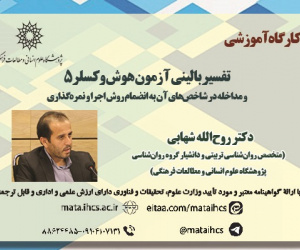اینرسی سازمانی در ایران؛ یک مرور سیستماتیک (مقاله علمی وزارت علوم)
درجه علمی: نشریه علمی (وزارت علوم)
آرشیو
چکیده
اینرسی سازمانی یک عامل مهم مخل در انطباق پذیری کارکردی سازمان ها با محیط می باشد. این مطالعه با هدف شناسایی پیشایندها و پسایندهای اینرسی سازمانی در ایران انجام شد. این مطالعه به لحاظ سنخ شناسی مروری و متکی بر روش مرور سیستماتیک بود. به کارگیری مرور سیستماتیک براساس یک پروتکل منظم انجام گرفت که شامل سه مرحله کلان پیشایند تحقیق (تعیین پرسش اصلی و الگوی پرسش)، فرایند پژوهش (تعیین معیارهای واجد شرایط، استراتژی جستجو، فرایند انتخاب مقالات و استخراج داده ها) و برآیند پژوهش (ارائه سیمای مطالعات و ترکیب کیفی یافته ها) بود. در نهایت 30 مقاله حائز شرایط نهایی جهت توصیف و ترکیب داده ها شدند. نتایج توصیفی نشان داد که اکثر مطالعات در مجلات مدیریت منتشر شده و مبتنی بر رویکرد کمی، روش پیمایش و متمرکز بر گروه کارکنان انجام شده بودند. همچنین به لحاظ زمانی نیز مطالعات از قدمت ده ساله برخوردار بوده و مسئله اصلی آن ها تبیین اینرسی سازمانی بوده است. یافته های کیفی نیز نشان داد که پیشایندهای اینرسی سازمانی در 7 مضمون (ساختاری، مدیریتی، شناختی، ارتباطی، توانشی، منفعتی و رفتاری) و نیز پسایندهای اینرسی سازمانی در چهار مضمون (هنجاری، شناختی، عملکردی و رفتاری) قابل طبقه بندی هستند. با توجه به نقش بی بدیل اینرسی سازمانی در کمینگی کارکرد سازمان ها در عصر تغییرات، این نیاز جدی وجود دارد که مطالعاتی با رویکرد سیستمی جهت مدیریت مسئله اینرسی سازمانی انجام شود.Organizational Inertia in Iran: A Systematic Review
Organizational inertia is a significant disruptive factor in the functional adaptability of organizations to their environment. This study was conducted with the aim of identifying the antecedents and consequences of organizational inertia in Iran. The study was characterized as a review typology and relied on a systematic review method. The implementation of the systematic review was based on a structured protocol that included three major phases: research antecedents (defining the main question and question pattern), research process (determining eligibility criteria, search strategy, article selection process, and data extraction), and research outcomes (providing an overview of studies and qualitatively synthesizing findings). Ultimately, 30 articles met the final criteria for data description and synthesis. Descriptive results indicated that most studies were published in management journals, based on a quantitative approach, utilized survey methods, and focused on employee groups. Additionally, from a temporal perspective, the studies had been conducted over the past ten years, with their main issue centering on the explanation of organizational inertia. Qualitative findings also revealed that the antecedents of organizational inertia could be categorized into seven themes (structural, managerial, cognitive, communicative, capability-based, benefit-oriented, and behavioral), while the consequences of organizational inertia could be classified into four themes (normative, cognitive, performance-related, and behavioral). Given the indispensable role of organizational inertia in inhibiting the functioning of organizations in an era of change, there is an urgent need for studies adopting a systems approach to address the issue of organizational inertia.








